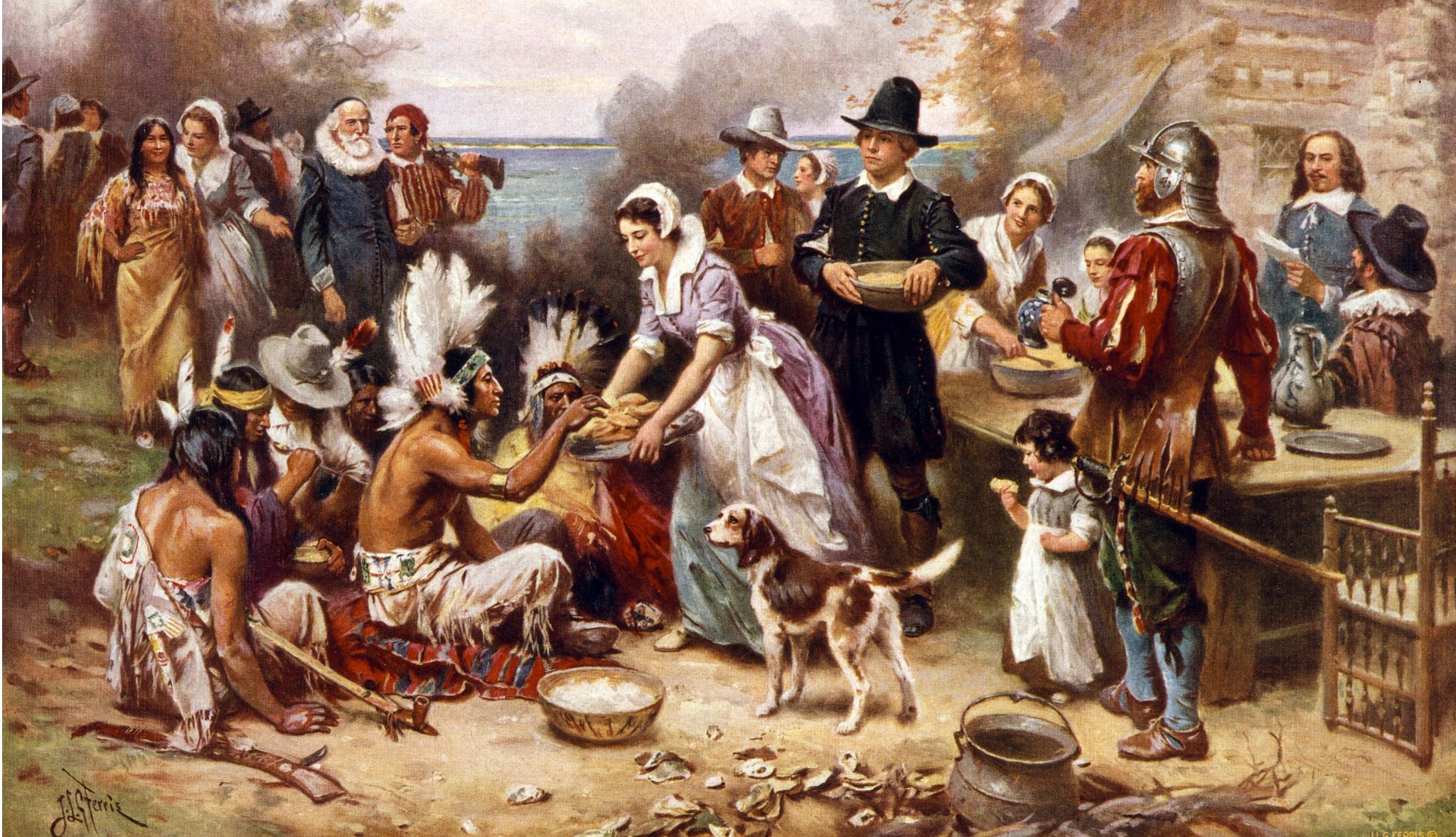
12 key dates in thanksgiving history
- Select a language for the TTS:
- UK English Female
- UK English Male
- US English Female
- US English Male
- Australian Female
- Australian Male
- Language selected: (auto detect) - EN
Play all audios:

1623 While an autumn Thanksgiving had been a common religious celebration in the colonies, this was the first Thanksgiving that was recognized by a civil authority— by William Bradford,
governor of Plymouth — rather than by religious leaders. Today, while Thanksgiving is often celebrated in religious settings, it is widely considered a secular holiday designated by the
federal government. George Washington's original 1789 proclamation establishing the first Thanksgiving Day is seen on display at Christie's New York in 2013. AFP via Getty Images
1789 President George Washington, in his first year in office, issued the first proclamation for Thanksgiving to be a national holiday, designating November 26th as a public day of
Thanksgiving. Since then, there’s been a precedent for the federal government to declare the public holiday — though, at the time, this was contentious, with anti-Federalists who believed
the declaration was better left up to the states or, worse, that it was mimicry of European customs. Washington’s successor John Adams didn’t declare a Thanksgiving — and neither did
Thomas Jefferson, our third president. Both believed it presented a conflict between church and state. 1815 Jefferson’s successor President James Madison broke with tradition and declared
Thanksgiving in March of 1815as a day of gratitude to offer up thanks to God for ending the calamities of the War of 1812 and preserving the union. After Madison’s proclamation, it wasn’t
until Abraham Lincoln came into office that another president declared a public holiday of Thanksgiving. 1827 Writer and activist Sarah Josepha Hale began a campaign to establish
Thanksgiving as a national holiday. In the following decades, she would write to Congressmen, governors and even presidents, emphasizing the need for a moral reunion of American society in
turbulent years. Hale admired the notion of Thanksgiving being open to people of all faiths, which harmonized with America’s principle of freedom of religion. As an abolitionist, she hoped
the national holiday would unite a country divided over slavery. 1863 After decades of campaigning, Hale was successful in persuading President Abraham Lincoln to sign “A National Day of
Thanksgiving and Praise” into being amid the Civil War. He reminded the nation of the reasons to give thanks, despite the severity of war: industry had increased, the population was growing,
the harvest was good and we preserved peace with other nations, and, “‘Harmony has prevailed everywhere except in the theatre of military conflict.” This day of Thanksgiving was designated
as the last Thursday in November.
